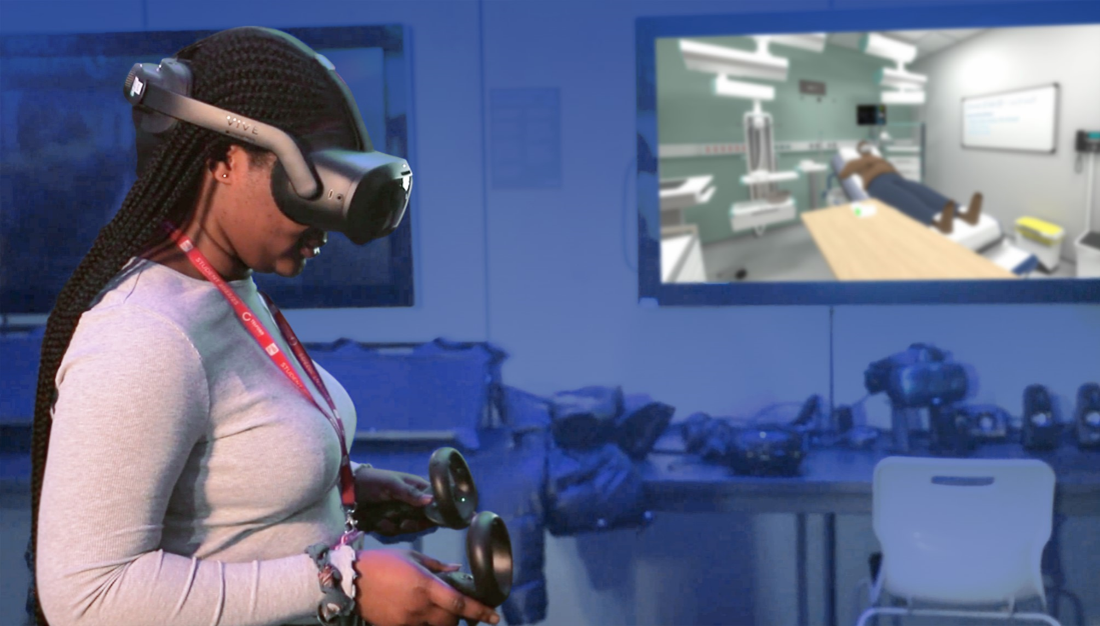We’ve all been in training scenarios that felt a little lacklustre, or workshops where people were reluctant to contribute. When it comes to DEI training, it can feel generic and fail to produce changes in culture or attitude. While 89% of employees surveyed by Forbes say that their company has programs in place to support DEI, 62% don’t believe that their employer is doing enough. Likewise, research published in BMC Psychology has revealed that short, one-off sessions of DEI training favoured by employers are less likely to have a long-term impact. What if there was a tool that could completely immerse your learners and be repeated and analysed at your leisure? Virtual Reality is increasingly being used as a learning tool to do just that.
Instead of being asked to imagine how a situation feels for someone else, we can put you in the shoes of a diverse range of people and you can experience that reality firsthand. A VR learning programme for trainee Health Care Assistants at Telford College has been specifically designed to help them pre-experience the emotional challenges they would face. It’s a space in which learners could see, hear and feel a plethora of harsh realities for marginalised patients and HCPs. Being able to carve out a moment in time gives users a full 360 view of things they fail to understand in other mediums. That exposure is vital to shock people into thinking and behaving differently.
When you immerse yourself into a reality that isn’t your own, it’s a safe way for you to unpack your initial reactions and views. It gives you the opportunity to go back and make better decisions, which we’re never given in our day to day. It’s a powerful tool to invoke cultural change and really shift organisational behaviours. Virtual reality experiences can strongly provoke the participants’ emotions. Research from PwC showed that V-learners felt almost four times more emotionally connected to the content than traditional classroom learners. Think about issues such as homophobia, sexism, racism, xenophobia, classism and so forth. The majority of people may understand it is unacceptable for these prejudices to occur in the workplace. But, they have no idea what they actually look like – or feel like – for marginalised people, or how to help their colleagues and intervene in these situations. For me, this is another reason why traditional DEI training can feel generic and uninspiring, because people are too uncomfortable to admit that they don’t understand what others might be going through. Likewise, even when participants want to make changes, where can they actually practise making different decisions and challenging others in a safe manner? Without a space where people can experiment and build up their confidence, it can be hard for organisations to bring DEI values to life.
Virtual reality challenges the users’ own assumptions about their workplace. This, in our experience, is a pivotal instigator for effective conversations and evolving organisational behaviours. We need our learners to feel uncomfortable at times in these experiences. Too often, people believe that discrimination of any kind is about overt, abusive outbursts. This isn’t usually the case; for many marginalised groups, it’s a build up of small events that make them feel excluded and unwelcome. These subtle moments of discrimination can be hard to pick up on, but VR can put us in that world for a few minutes and allow us to literally walk in their shoes.
VR can really bring DEI training to life and help people to understand the small acts of discrimination that add up to feeling marginalised and like an ‘outsider.’ Learners don’t have to imagine scenarios, because they are immersed in them, with no distractions, for several minutes. It’s also a safe place for people to feel those uncomfortable emotions for potentially the first time and then discuss them in a classroom environment. Those discussions are then an effective starting point to build a real understanding of what needs to be changed. Getting uncomfortable could be one of the most important things your company can do to make it a fairer, more equitable place for everyone.







